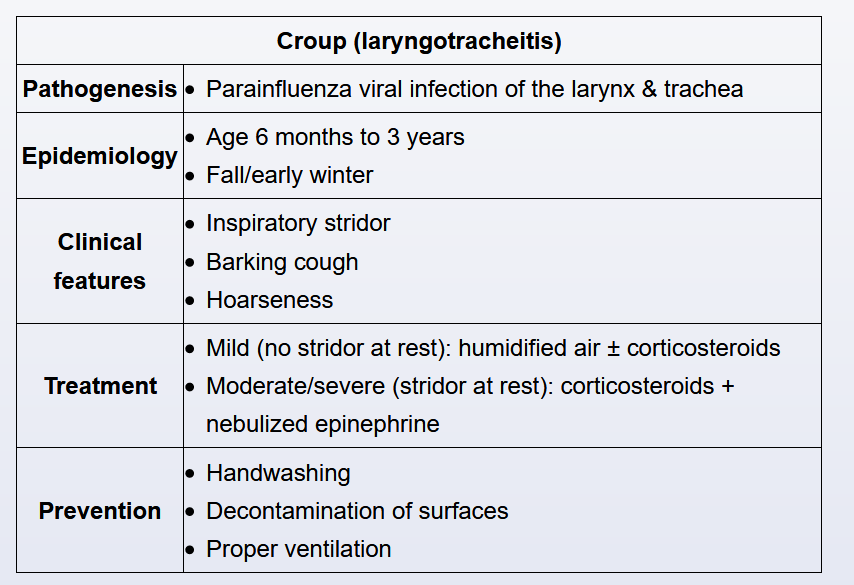croup
- related: Pediatric

Croup (laryngotracheitis) is a viral infection that most frequently affects children age <3. It typically begins with a brief prodrome of rhinorrhea and fever, followed by the abrupt onset of a harsh, "barking" cough; hoarseness; and stridor. Symptoms develop due to narrowing of the subglottic space from viral inflammation, which is classically seen on neck radiographs as the steeple sign. Many viruses cause croup; however, the most common etiologic agent is parainfluenza.
Parainfluenza typically causes respiratory disease during the late fall and early winter. There is no available vaccine against it, so prevention depends on hand hygiene, disinfection and sanitization of contaminated surfaces, and proper ventilation.
Most parainfluenza infections are mild and self-limited, but treatment can be offered to relieve symptoms of airway obstruction. Mild croup is managed with humidified air and corticosteroids; moderate to severe disease requires corticosteroids and nebulized epinephrine.
Although an unimmunized child would be at risk, cough is generally absent in epiglottitis, and the patient would appear toxic (eg, high fever, drooling, tripod positioning).